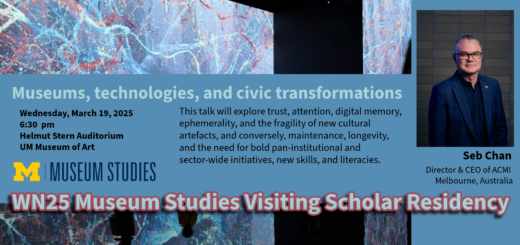Oct 25 Museums@Noon – A Museum Fit for a President

A Museum Fit for a President
Albert Cavallaro, PhD Candidate, History
October 25 from 12:00 – 1:00 pm
1014 Tisch Hall
This talk reflects on the State Museum of the History of Uzbekistan’s response to a planned presidential visit by Shavkat Mirziyoyev, the current president of Uzbekistan. Had it not been cancelled just two days before it was scheduled to occur on June 25th, 2024, it would have been the first visit to the museum by Mirziyoyev since he assumed the presidency in 2016. Rushed preparations initiated a host of changes inside the museum pertaining to its exhibitions. Most critically, one month prior to the anticipated visit, the museum closed to the public and all of its displays from the Stone Age to the 16th century were changed.
I will touch on issues ranging from leaking ceilings to breaking objects, as well as to the broader discussions and arguments that occurred in the museum over what a “modern” museum is supposed to be and what elements of the old exhibitions still fit the demands of current national narratives. In doing so, I will show the museum’s close relationship to the state, not only as the provider of financial funds, but also, in many ways, as the museum’s main anticipated audience. With my dissertation focusing on the history of this museum from 1876 until the collapse of the Russian empire in 1917, in this talk I will present a brief historical overview that will allow me to chart the museum’s navigation from the Tsarist period to the Soviet period, and to the current moment.
Albert Cavallaro is a historian of the Russian empire and Central Asia with a focus on the nineteenth century. His dissertation, “Things Disappear: The Turkestan Public Museum and Imperial Love, 1876-1917,” examines the rapid growth of museums across Central Asia in the tsarist period. Via an intensive focus on the Turkestan Public Museum, located in modern-day Tashkent, Uzbekistan, he shows a variety of actors embracing museums, libraries, and collections of old materials as sites of intensive emotional identification, or “love,” for a variety of purposes. Accordingly, his work investigates entanglements of museums, colonialism, religion, science, and love in nineteenth-century Tashkent.


